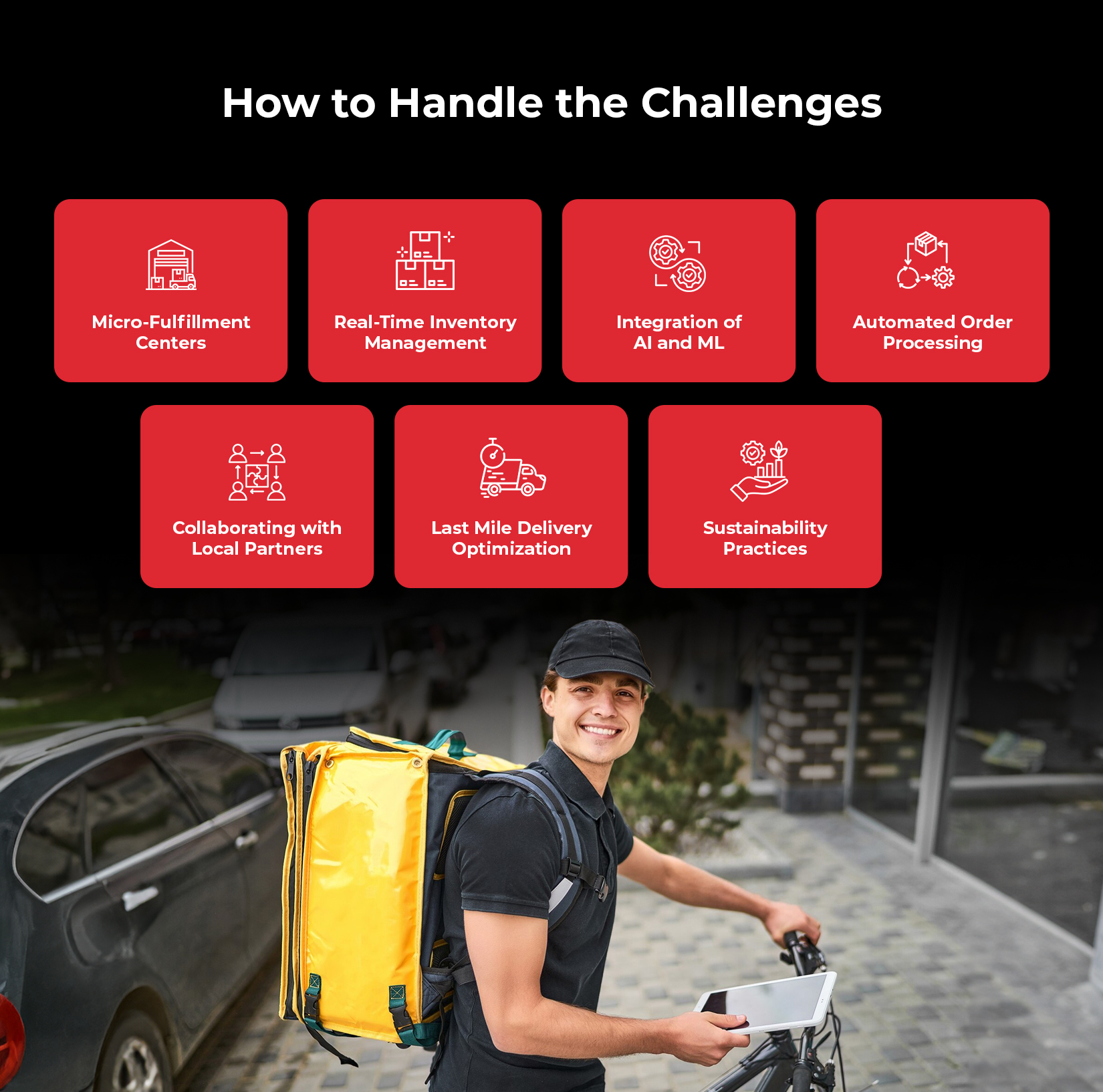
On-Demand Delivery- Grasping the Logistics of Quick Commerce
The last few years have seen a huge growth of quick commerce companies/startups. These companies promise grocery or essential delivery within a short time of 15-30 mins. Customers now frequently demand rapid delivery for the last minute needs as work pressure, sedentary habits have forced them to explore on-demand delivery options.
The world of deliveries changed staggeringly ever since the Covid-19 Pandemic barging in. This led to a rise in the demand for food and essentials deliveries within a short time in urban areas. With q-commerce coming, it has raised the level of on-demand delivery for all the retailers regardless of the industry.
However, guaranteeing last minute deliveries is not as easy as it looks. Even though quick commerce companies have the chance of facing success in close quarters, managing operations at this scale poses huge logistical, operational and cost challenges. Profit is dependent on the competitive pricing while maintaining quality and safety standards.
Quick commerce platforms provide delivery management services and delivery routing solutions through a combination of advanced technologies, strategic route planning and systemic operational processes. Here’s an outline of how these platforms can effectively handle these challenges:

1. Micro Fulfilment Centers:
Quick commerce relies highly on micro-fulfillment centers, a.k.a dark stores. These are calculatedly located small warehouses which are close to the urban customer areas that allow for rapid order fulfillment. Instead of using large warehouses, many quick commerce companies prefer these small ones as these facilitate quick access to inventories.
2. Real-Time Inventory Management:
Managing efficiency is a difficulty when logistics are involved. To sort this, quick commerce companies take the advantage of real-time inventory management systems. These systems monitor inventory levels at many sites, guaranteeing that in-demand commodities are easily accessible for prompt delivery. Technologies such as RFID and barcoding increase inventory accuracy.
3. Integration of Artificial Intelligence (AI) and Machine Learning (ML):
Integrating AI and ML in the delivery management software will handle and optimize logistics in a much better way. AI driven analytics and the associated data aid will help in demand forecasting, as a result helping the businesses in making strong predictions. Moreover, delivery routing software is enabled to optimize delivery routes, minimize costs and travel time.
4. Automated Order Processing:
Automation plays an important role in improving the efficiency of logistic operations. By automating order management processes, a quick commerce company can streamline tasks, significantly reducing the time to deliver products and achieve on-demand delivery. This not speeds up the delivery process but also reduces overall operational costs.
5. Collaborating with Local Partners:
Many quick commerce companies collaborate with local partners and utilize existing infrastructures, such as retail spaces, to enhance their distributing network. These alliances have the potential to increase customer satisfaction by streamlining delivery procedures and broadening the selection of goods that are accessible for prompt delivery.
6. Last Mile Delivery Optimization:
Last Mile is a very crucial step in the delivery process. Companies often employ a dedicated fleet of delivery personnel to fulfill this step. To ensure this step is completed with the right time, companies also focus on using a Last Mile Delivery Software to improve scalability and reduce time and costs.
7. Sustainability Practices:
In addition to speed and scalability, many quick commerce companies are also focusing on sustainability. They aim at reducing the carbon footprint by using EV’s or bicycles for deliveries. The close proximity of dark stores, also minimizes the need for extensive transportation, aligning with the need of sustainability.
Checkout: How can enterprise businesses optimize every touchpoint with Delivery Management Software?
Conclusion
The rapid expansion of quick commerce is reshaping the landscape of on-demand delivery, offering unparalleled convenience to consumers. As customers increasingly seek fast and efficient delivery solutions, quick commerce companies are innovating to meet these demands while navigating complex logistical challenges. The success of this model hinges on the seamless integration of technology, streamlined operations, and close proximity to urban centers. While the promise of delivery within minutes is appealing, maintaining profitability, operational efficiency, and customer satisfaction requires significant investments in infrastructure and technology. Moreover, sustainability is becoming a key focus as companies strive to balance speed with eco-conscious practices.
As quick commerce continues to evolve, the focus will likely remain on optimizing the delivery process, managing resources effectively, and creating a sustainable framework that meets both consumer expectations and environmental responsibilities. This dynamic sector is poised to grow further as more businesses adopt innovative solutions to remain competitive in a fast-paced market. Click on the red button below to book a demo with LogiNext Mile and achieve on-demand delivery for your quick commerce.
50







@LogiNext